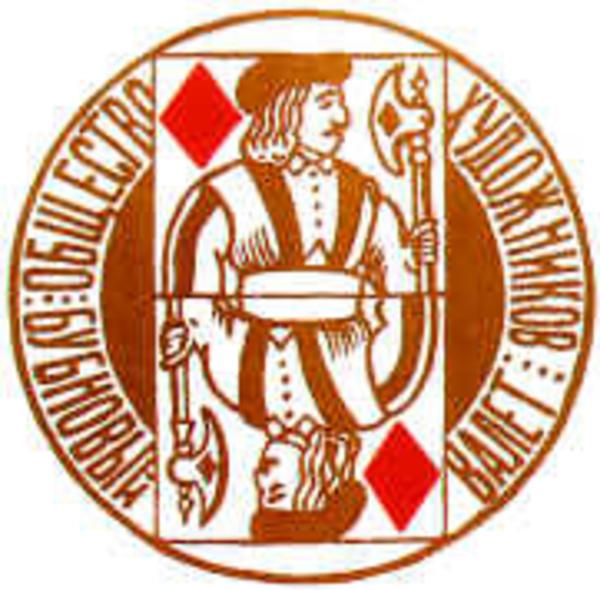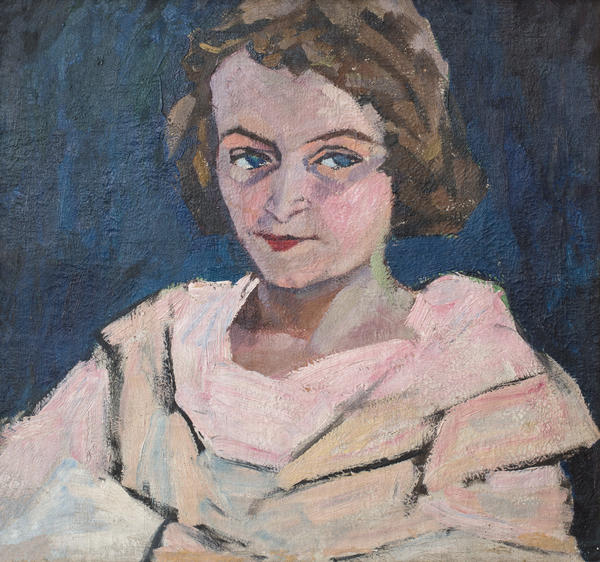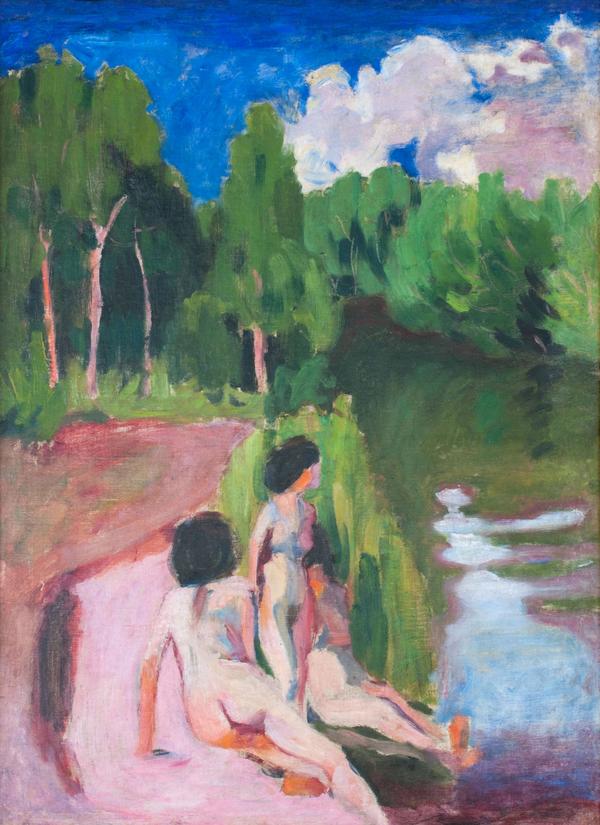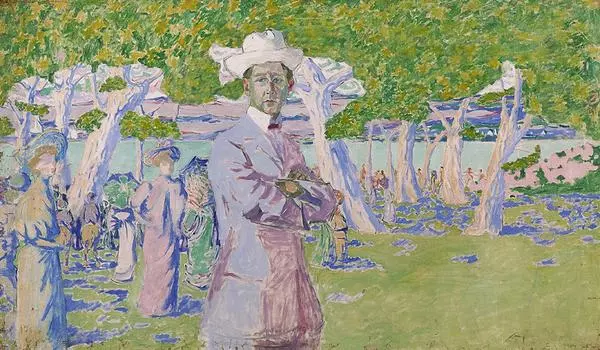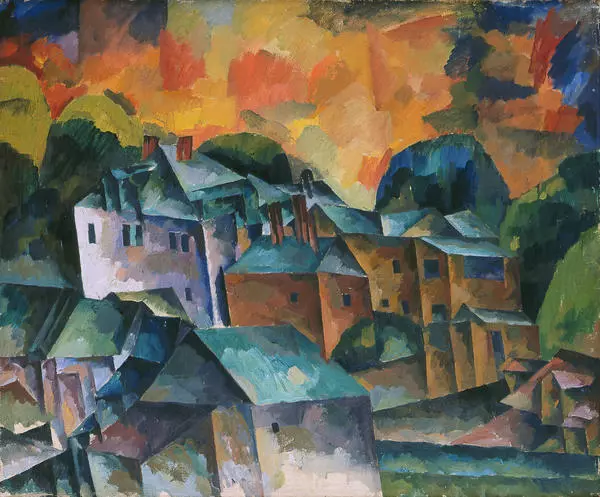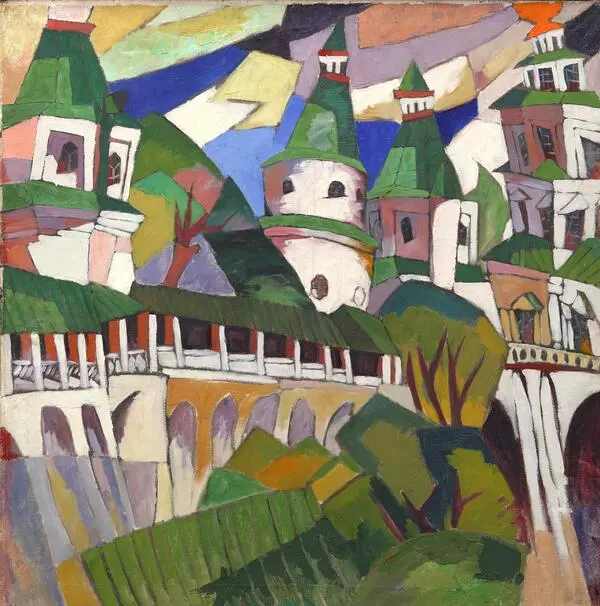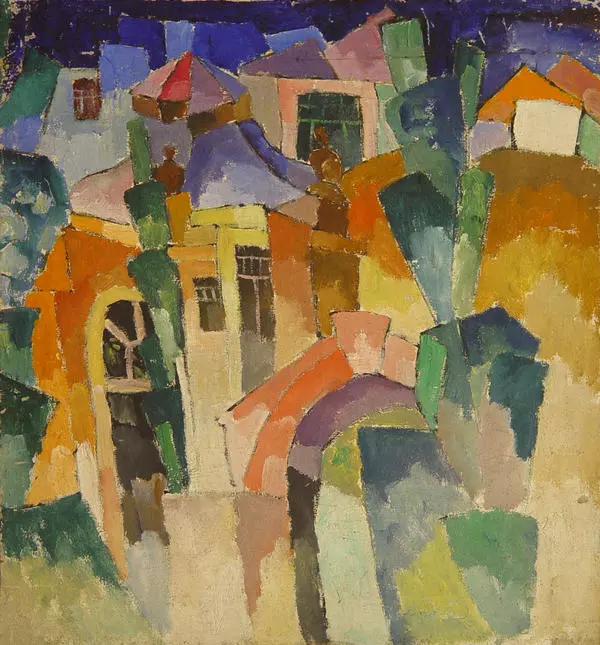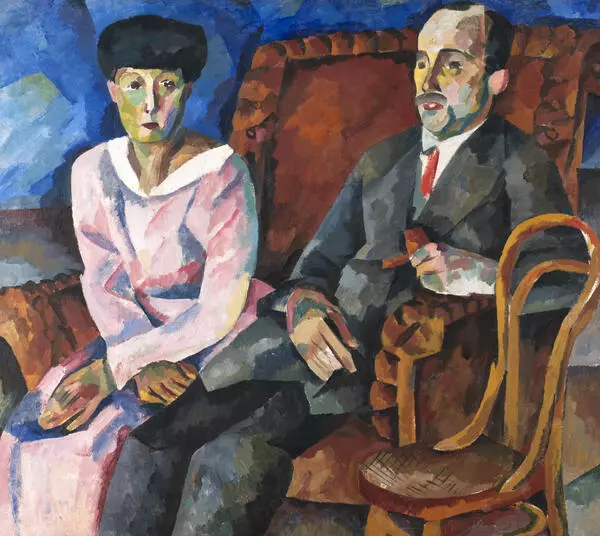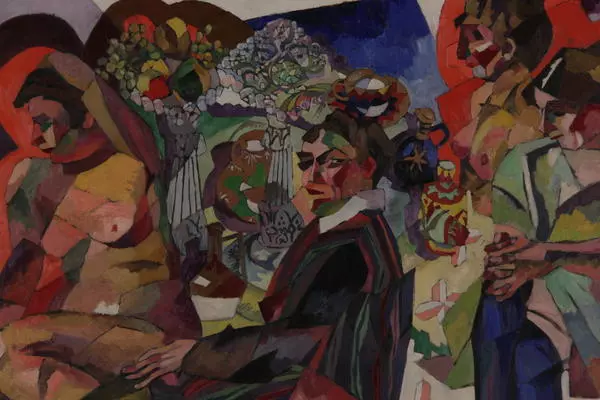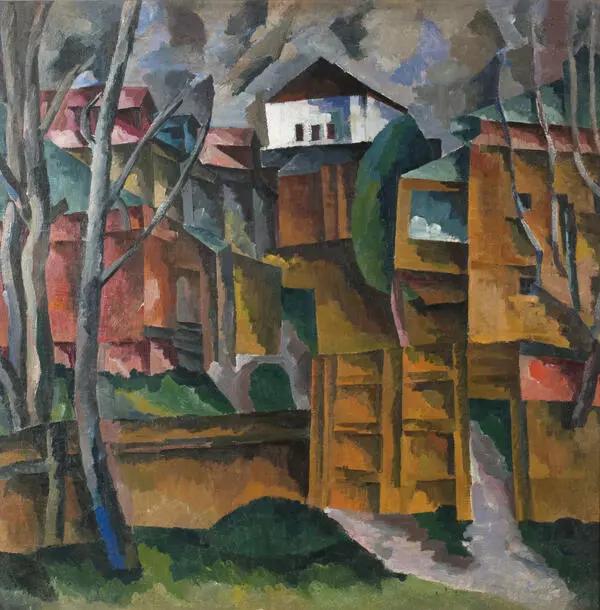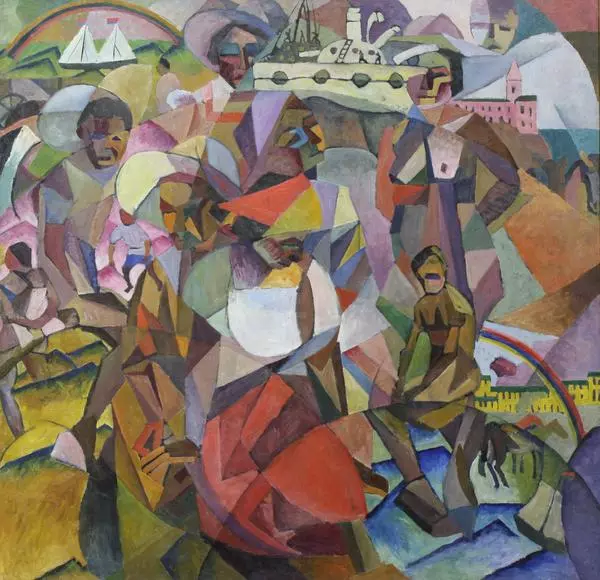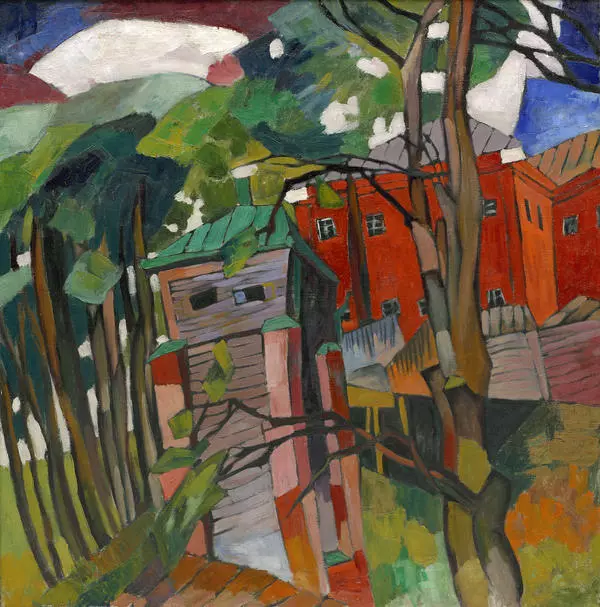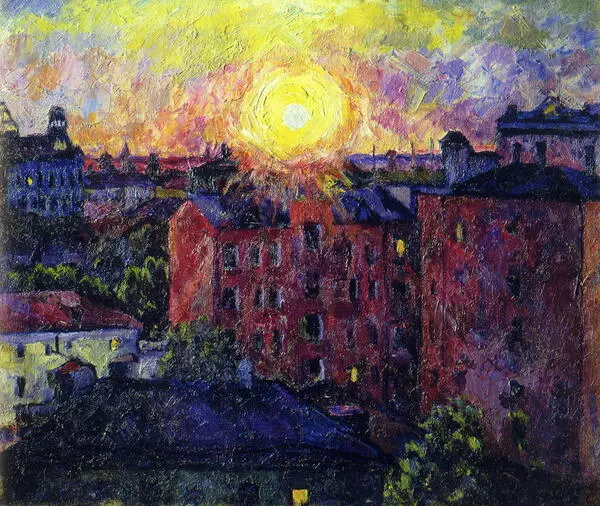Contemporaries recalled Lentulov as a temperamental cheerful giant who conquered those around him with kindness of soul, vitality and openness.
This is how he appears in a self-portrait of 1915, where the mighty black-haired legendary hero, akimbo, looks down on the viewer, posing against a bright pattern.
The late self-portrait of 1940, stored in the Penza Art Gallery, is more realistic, calm and balanced. He depicts a successful and recognized Soviet artist who, at the end of his life, departed from the bold style of his youth and became the chairman of the Moscow Artists Society, founded by him.
On a self-portrait, Aristarkh Lentulov is depicted almost at full height in the workshop, surrounded by his favorite things. The work created with a free brush, but with great love for detail. In the room, you can see an open piano with notes, a Viennese chair, a table with a decanter and a teapot, a fragment of the picture. The whole composition of the canvas, soft greenish gamma with an admixture of ocher, the image of the artist himself radiates calm and confidence.
The piano in the picture is of the same importance as the brush in the hands of the artist. Aristarkh Vasilievich was a very musical person, he loved to sing while working, and, according to the memoirs of his daughter, he loved to sing a duet with Feodor Chaliapin himself, who often visited the Lentulovs' house. He was a close associate of Alexander Nikolayevich Scriabin, whose color and sound theory fascinated the painter so much that he created a huge canvas in the background of the stage for presentation of the Scriabin’s “Prometheus”, which was highlighted in different colors with special searchlights as the music changed.


